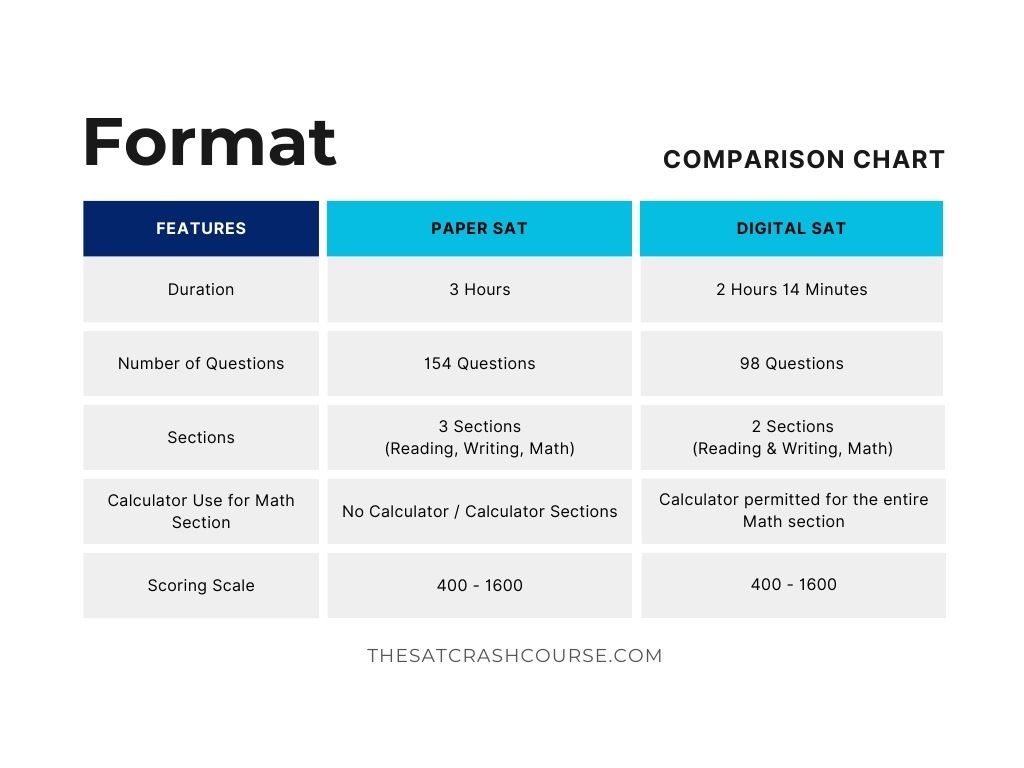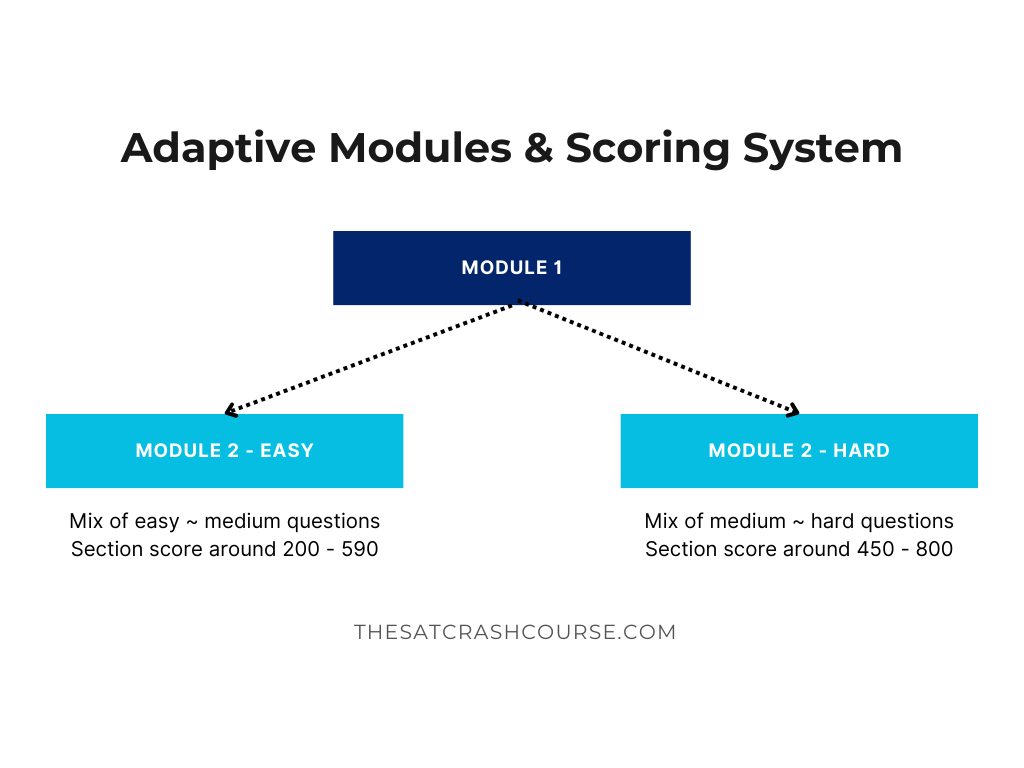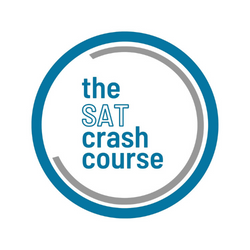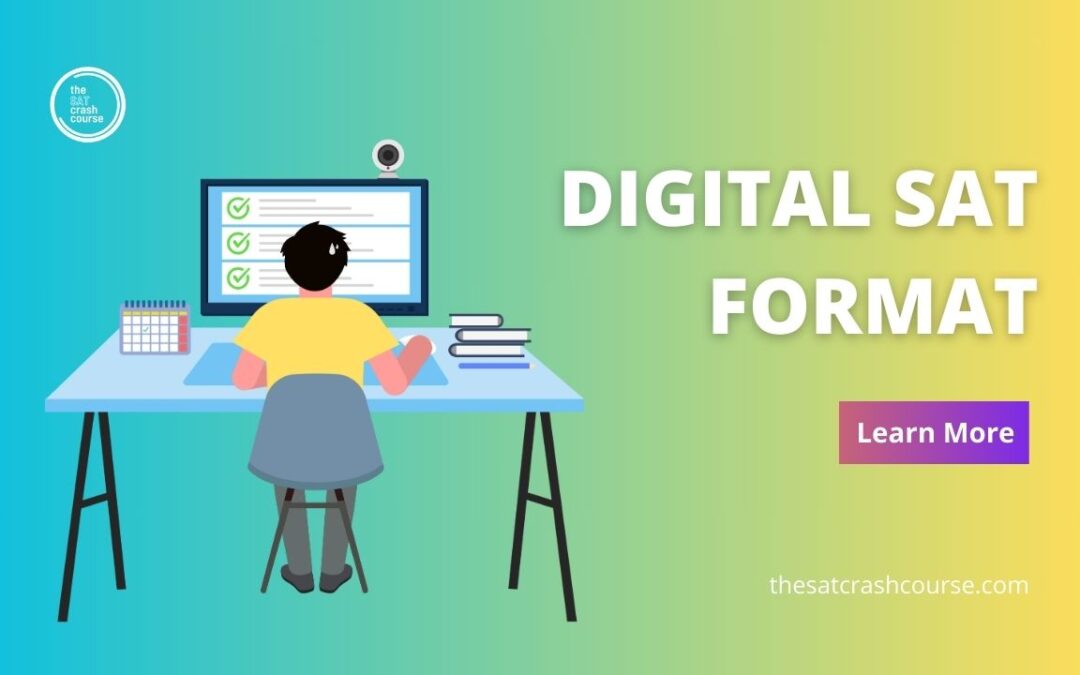As the College Board has administered the first digital SAT in the United States in March 2024, the century-old exam has officially transformed into its modernized form in all parts of the world. The digital SAT format is different from the paper SAT format in terms of not only the testing method but also how the test is structured. The College Board has claimed this change to be aimed at increasing accessibility of the test as well as facilitating the test-taking process for students. Although there have been some concerns about possible challenges the new format of the exam may impose, many test takers have shown their acceptance of the digital testing form.
As mentioned above, there has been a fundamental reorganization of the test that allows for personalized approach on assessing a student’s abilities. It would be of students’ best interest to get a solid understanding of this new system of the SAT in order to discover the way they can perform their best. In this blog post, we will review how the digital SAT is formatted and provide valuable tips and strategies to help you succeed on test day.
Understanding the Digital SAT Format
In terms of general scale, the SAT has been shrunk to a shorter and more compact test. Below is the comparison chart between the two versions of the SAT.

Notably, the digital SAT consists of two sections: Reading & Writing and Math. Previously-separate Reading and Writing sections are now combined into one section. Also, Math section allows calculator use in its entirety, instead of being separated into calculator and no-calculator sections. Both Reading & Writing and Math section consist of two modules, as the digital SAT uses adaptive testing that divides each section into two stages. We will discuss this in more detail below.
Reading and Writing
Reading and Writing section consists of two modules that each last 32 minutes with 27 questions. The passages will be shorter than before with no more than 150 words and only one question will be tied to a passage instead of multiple questions. These changes are intended to help students concentrate on the questions better, yielding more accurate assessment of their reading comprehension abilities.
Math
Math section consists of two modules that each last 35 minutes with 22 questions. 75% of the questions are multiple-choice and 25% of the questions are student-produced response questions. In-context questions, as known as word problems, account for 30% of the Math section and are less wordy than before. There are four main topics in Math section, algebra, advanced math, problem-solving and data analysis, geometry and trigonometry. Calculator is permitted for use in the entire Math section. Students can use the Desmos Calculator built in the testing app or bring their own calculator that is listed on College Board’s list of approved calculators.
Adaptive Modules
The introduction of adaptive testing may be one of the most significant changes made in the digital SAT. In this new testing method, the difficulty of the second module in a section is determined by the students’ performance on the first one. The easier module consists of mostly easy to hard questions whereas the harder module consists of mostly medium to hard questions.
Adaptive testing is designed to provide students with a more personalized experience of their tests based on their levels. It allows the test to be more compact and relevant to measuring each student’s academic abilities.
Scoring System
As in the paper SAT, students will receive 200 – 800 points from each section, summing to 400 – 1600 as a total score. Students will not be penalized for wrong answers, so it’s best for students to answer every question even if they are not 100% confident with their answers.
One thing to note is that the questions are weighted differently in the digital SAT – students who answer difficult questions correctly will be rewarded with a higher score. In other words, if students receive a harder module, they have a greater chance of scoring high if they get the answers right. On the other hand, if a student receives an easier module, there is a cap of somewhere around 590 to the student’s sectional score even if the student answers all the questions correctly.

How Does the New Format Affect Your Test Day
Given the digitalized nature of the test, students will be using an electronic device to take the exam. They can bring their own device such as Macs, iPads, or Windows or opt to use the device managed by the testing facility or request a device from the College Board. If student chooses to use personal device, the student needs to bring the device with the Bluebook application installed. Upon signing in to Bluebook using their username and password, students will be able to access the test to be taken on the computer screen. There will be a 10-minute break in between two sections during which students can take a small walk or have a snack that they brought from home.
Advantages of the Digital SAT Format
One of the main advantages of the digital SAT format is the ability to easily navigate between questions and sections. Test-takers can flag questions for review, skip ahead, and go back to previous questions with just a few clicks. They can also use the built-in tools such as the calculator for math problems and the annotating function for reading passages. These tools can help students stay organized and make informed decisions while taking the test. Another advantage of the digital SAT is that the new format allows for faster scoring, providing the students with the result within only a few days.
Challenges of the Digital SAT Format
While the digital format offers many benefits, it also presents possible challenges for test-takers. Some students may struggle with the transition from paper to screen, especially those who are more comfortable with traditional paper-and-pencil testing. For these students, it is essential to practice solving problems on screen beforehand to perform their best on the test day. The SAT Crash Course offers over 10 digital SAT practice tests that mimic the real digital SAT, so we recommend students take the tests to be more comfortable with the digital testing environment.

Is It Easier than the Paper SAT?
Some test-takers have agreed that the new SAT is effective in alleviating students’ stress in test-taking. Some of the changes favorable to students include shortened test duration and more straightforward questions and passages. However, the new testing method that requires students to solve problems on a digital device can act as a barrier to some students. Also, since the digital SAT is adaptive to students’ levels, it may feel more difficult to students on the advanced side. To learn more about how the new SAT will be easier or harder in your case, refer to this article: Is the Digital SAT Easier than the Paper SAT?
Leveraging the Benefits of the Digital SAT Format
The digital SAT is presenting a new era in standardized testing that requires test-takers to adapt to a computer-based environment. Since everyone is new to the change, it may be presenting a fair ground for students embarking on the SAT prep journey. By taking actions to learn to use the digitalized tools and get accustomed to the format, students can enjoy the benefits that the new SAT is offering.
What’s Next?
Now we know how the digital SAT is formatted, it is time to gain a hands-on experience on navigating the exam. To achieve this, you can take our digital SAT practice tests created and tested by expert test makers. The tests simulate test day conditions with similarly designed testing app that contains built-in functionalities. Taking our tests will help you get accustomed to the new format and craft your own test-taking strategies in the digitalized context. After several attempts, you will acquire the confidence that will help you tackle the digital SAT and achieve your target score!

